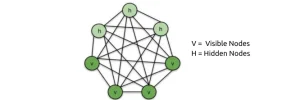The technological revolution has radically transformed the global labor landscape. Technological professions, driven by advances in computing and artificial intelligence, have emerged as fundamental pillars in the modern economy. This article examines the evolution of these professions, the technological advances that have allowed their proliferation, and how computing and artificial intelligence have redefined the global work paradigm.
Evolution of technological professions
The evolution of technological professions is a direct reflection of scientific and technological progress. Over the past few decades, we have seen a transition from manual, repetitive jobs toward roles that require advanced technical skills and specialized knowledge.
First stages
The first technological professions emerged with the Industrial Revolution, where the mechanization of production processes led to the creation of new technical roles , such as mechanical engineers and machinery operators. The invention of electricity and the telegraph also created demand for electricians and telecommunications technicians.
The Computer Age
The real paradigm shift began with the invention of computers in the mid-20th century. The first computers, such as the ENIAC and UNIVAC, although primitive by today’s standards, marked the beginning of a new era. This led to the emergence of professions such as programmers, systems analysts, and computer technicians.
Internet and globalization
The arrival of the Internet in the 1990s and its rapid global adoption further transformed the employment landscape. New professions such as web developers, system administrators, and cybersecurity experts emerged. Globalization allowed technological knowledge and skills to be shared and applied in different parts of the world, increasing the demand for these professionals.
The Fourth Industrial Revolution
We are now immersed in the Fourth Industrial Revolution, characterized by a fusion of technologies that blurs the lines between the physical, digital and biological spheres. This phase has given rise to new technological professions in areas such as artificial intelligence, biotechnology, advanced robotics and the Internet of Things (IoT).
Technological advances that have allowed the proliferation of technological professions
Constant advancement in various technological areas has been the driving force behind the creation and expansion of technological professions. Some of the most significant milestones include:
Computing power and data storage
Moore’s Law, which predicts a doubling of microprocessor power approximately every two years, has been an essential catalyst. This increased processing capacity, along with reduced data storage costs, has made it possible to handle massive amounts of information efficiently, creating demand for data scientists and big data experts.
Software development
The development of more advanced and high-level programming languages has made it easier to create more complex and functional applications. Frameworks and languages such as C, Python, JavaScript, and the suite of tools from Microsoft and Google have allowed the emergence of new specializations such as full-stack developers, software architects, and DevOps engineers.
Communication & Networking
Progress in networking and communications technologies, such as fiber optics and 5G, has dramatically improved the speed and reliability of global communications. This has allowed the proliferation of remote work and increased demand for network engineers, telecommunications specialists and cybersecurity experts.
Artificial Intelligence and Machine Learning
The rise of artificial intelligence and machine learning has revolutionized numerous industries, from medicine to finance. The ability of machines to learn and make decisions based on data has led to the creation of new roles such as machine learning engineers, data scientists, and artificial intelligence experts.
How computing has changed the global work paradigm
Information technology has been one of the main drivers of the transformation of the labor paradigm. Its impact can be seen in multiple facets:
- Process automation: Process automation through the use of software has replaced repetitive and manual tasks, improving efficiency and reducing errors. This has freed workers from tedious tasks, allowing them to focus on more strategic, high-value activities. Professions such as production line operators have been replaced by automation engineers and robotics specialists.
- Remote work and collaboration: Digital communication and collaboration tools such as email, video conferencing, and project management platforms have made remote work easier. This has led to greater labor flexibility and has allowed companies to access global talent, transcending geographic barriers. Roles such as software developers, graphic designers and IT consultants are now common in teleworking arrangements.
- Creation of new industries: IT has been fundamental in the creation of new industries, such as software, video games, e-commerce and financial technology (fintech). These industries have spawned a wide range of new professions, from video game developers to financial data analysts.
- Education and continuing training: The availability of online educational resources and learning platforms has democratized access to technological education. This has allowed professionals to acquire new skills and stay current in an ever-evolving field. Continuing education and the ability to quickly adapt to new technologies have become essential skills in today’s world of work.
And what happens with artificial intelligence?
Artificial intelligence ( AI) is transforming the world of work in profound and multifaceted ways.
Automation and efficiency
AI has taken automation to the next level, allowing machines to perform complex tasks that previously required human intervention. This includes everything from manufacturing process automation to inventory management and predictive analytics in various industries. Traditional professions are being redefined, with an increasing focus on monitoring and improving automated systems.
Data-driven decision making
AI‘s ability to analyze large volumes of data and provide actionable insights has revolutionized business decision-making. AI tools are now essential in strategic planning, personalized marketing and supply chain management. Professions such as business analysts and marketing managers are increasingly integrating knowledge in data science and artificial intelligence.
Personalization and customer experience
In the service sector, AI is transforming the customer experience through personalization and predictive analytics. Virtual assistants, chatbots, and personalized recommendation systems are improving efficiency and customer satisfaction. This has created a demand for specialized roles in the integration and optimization of these technologies.
Innovation in health
AI is revolutionizing healthcare, from diagnosis to treatment. Deep Learning algorithms are being used to identify patterns in medical images, predict disease outbreaks, and personalize treatments. This has generated new professions in the fields of bioinformatics, telemedicine and digital health.
Ethical challenges and considerations
The advancement of AI also poses important ethical and social challenges. Replacing human jobs with automated systems raises concerns about unemployment and economic inequality. Furthermore, autonomous decision-making by machines raises questions about accountability and transparency. Tech ethics professionals and regulators are emerging to address these challenges.
Also you can read abou the following topics:






